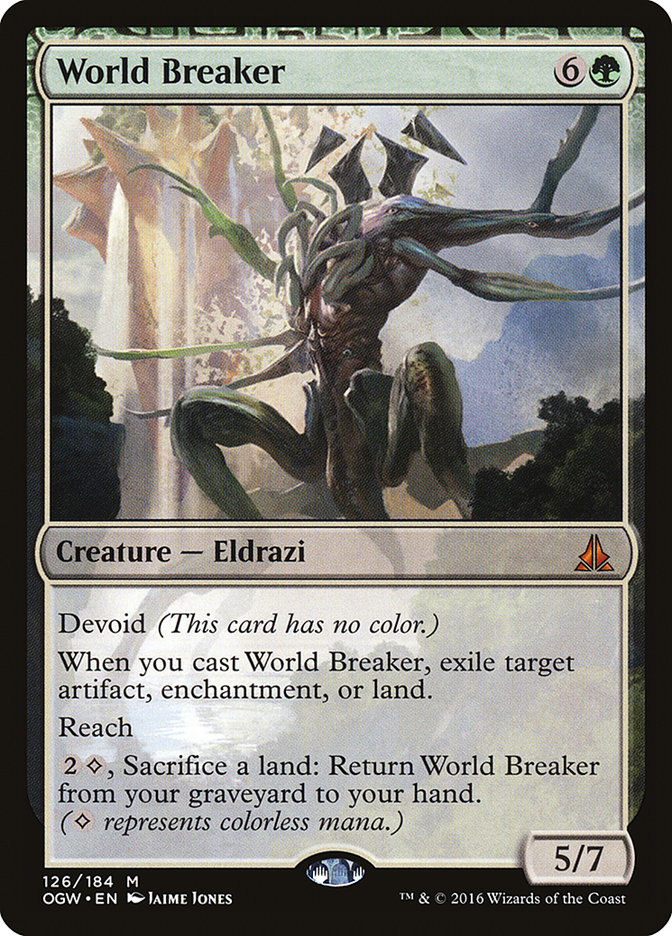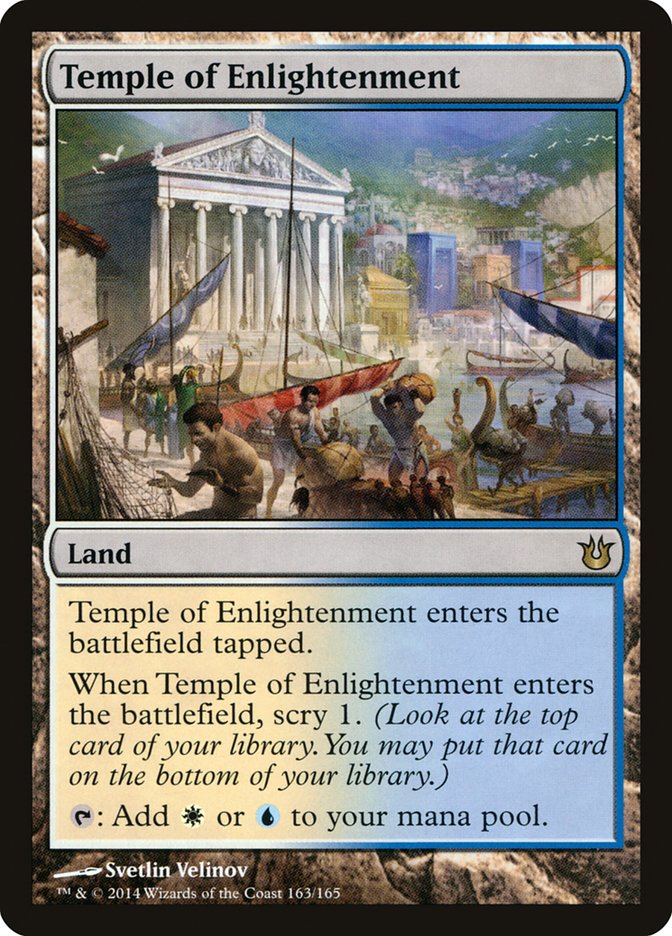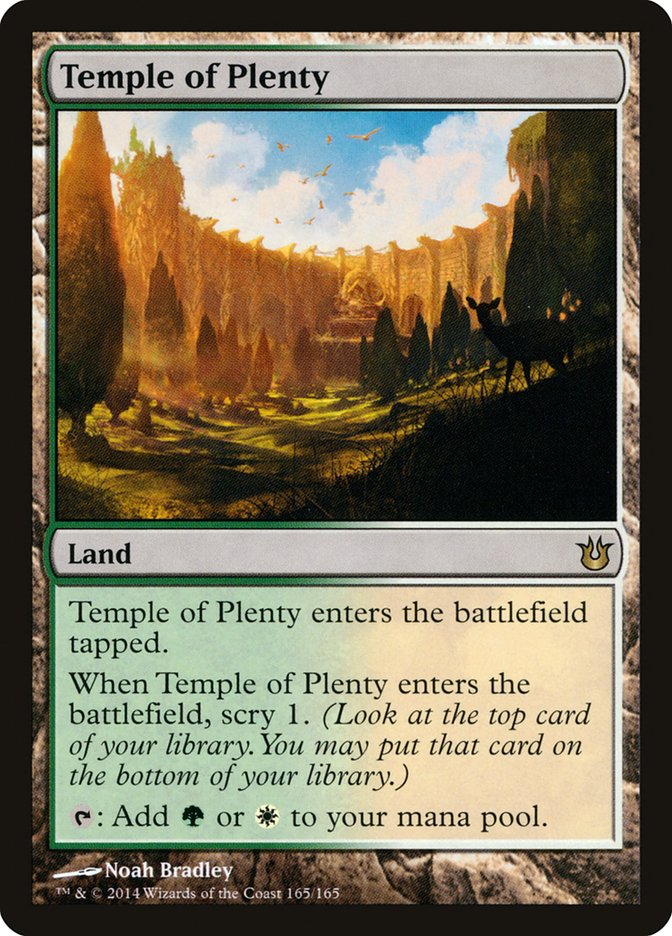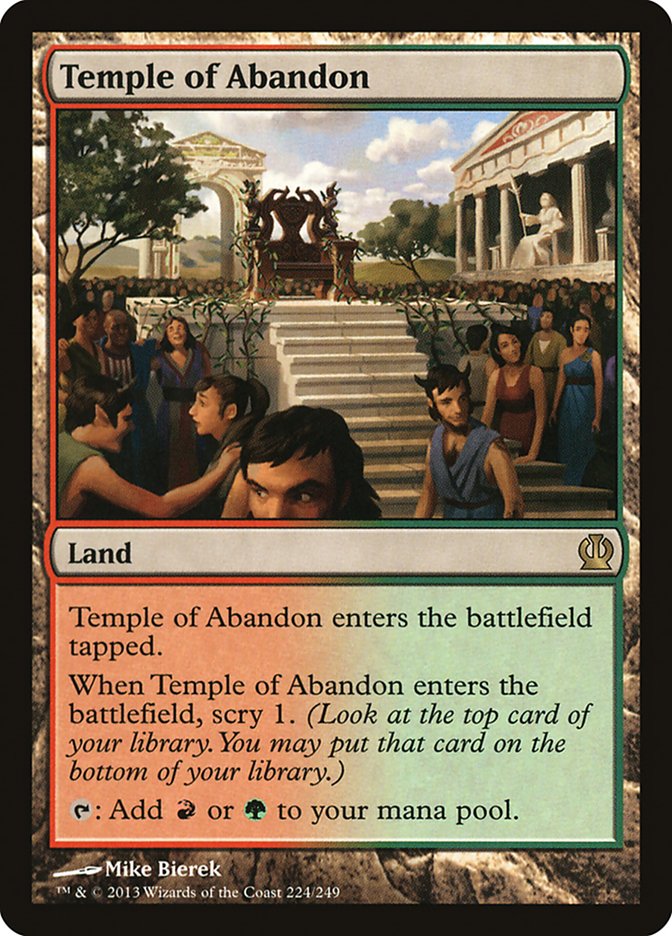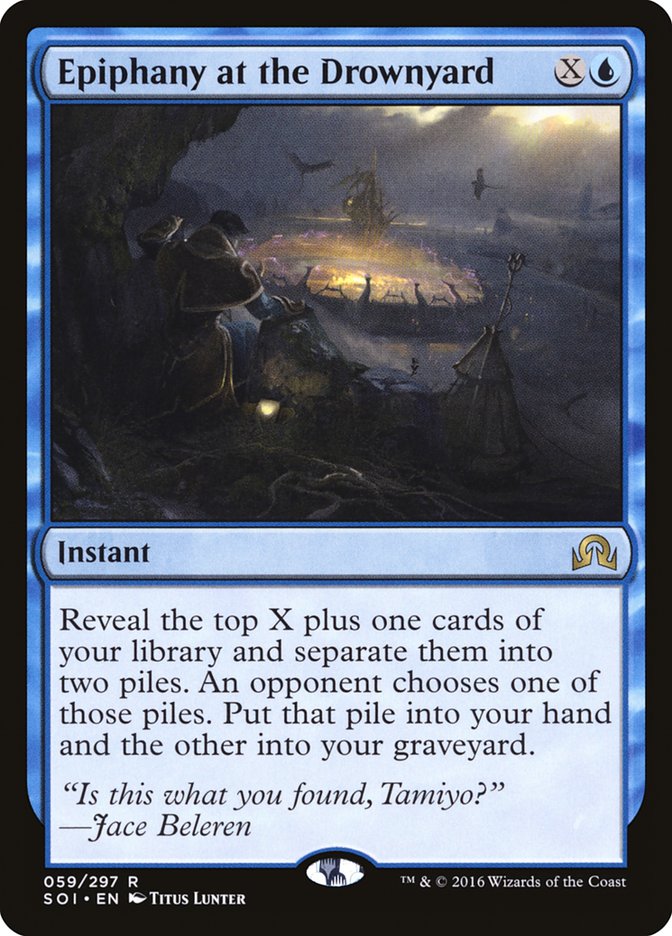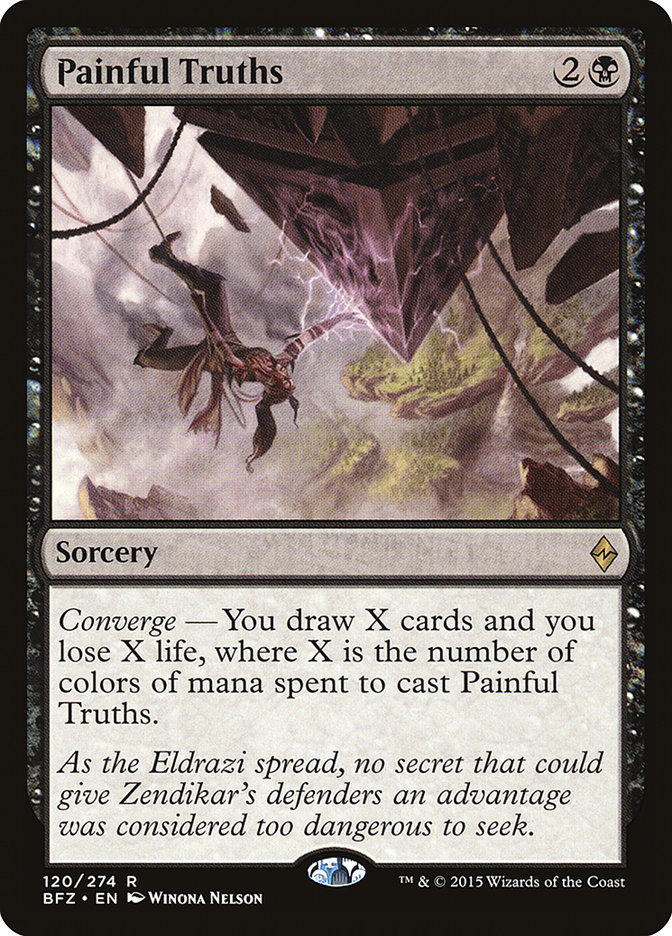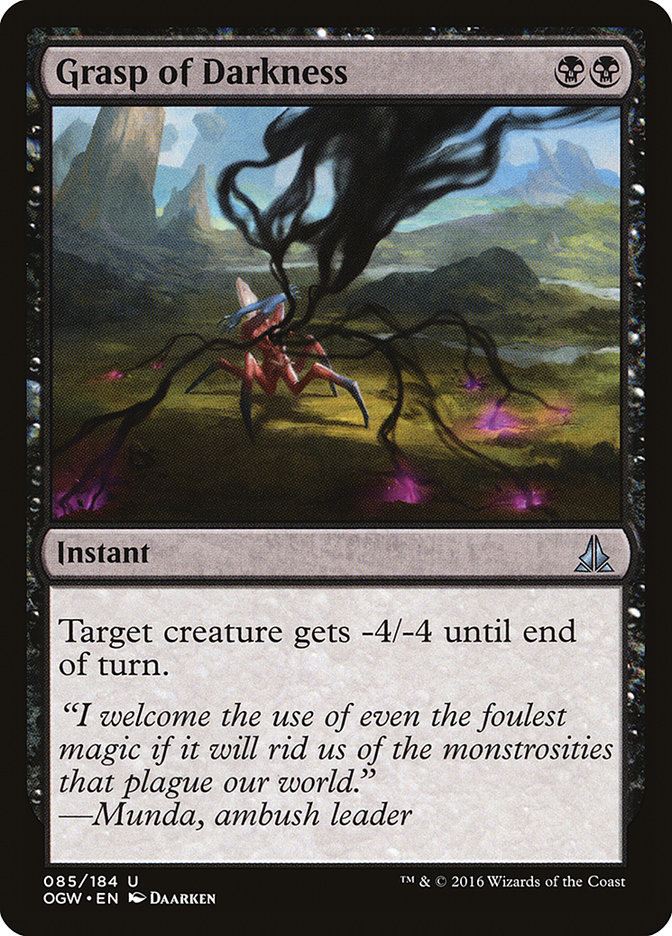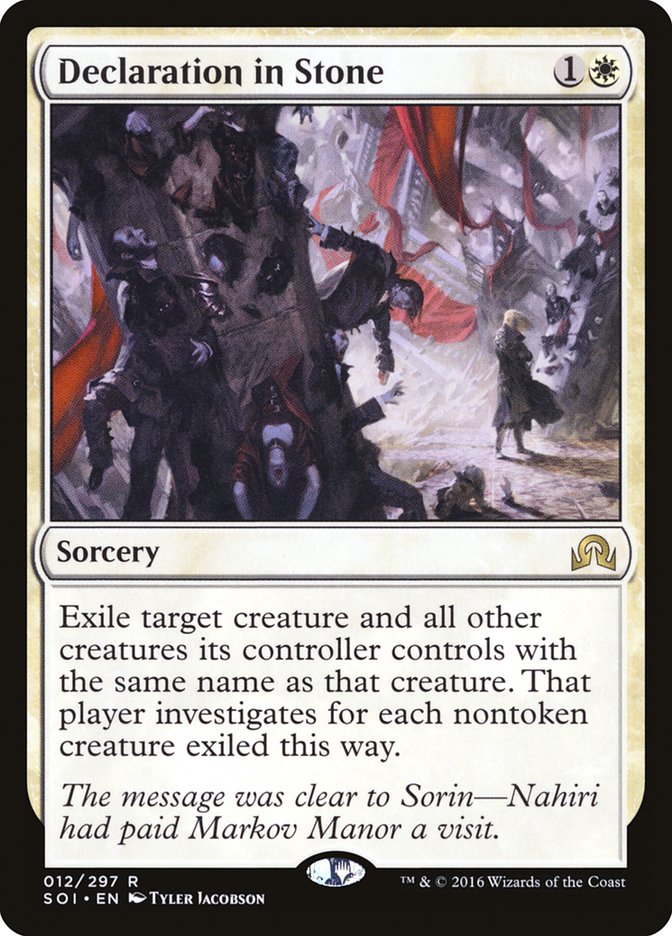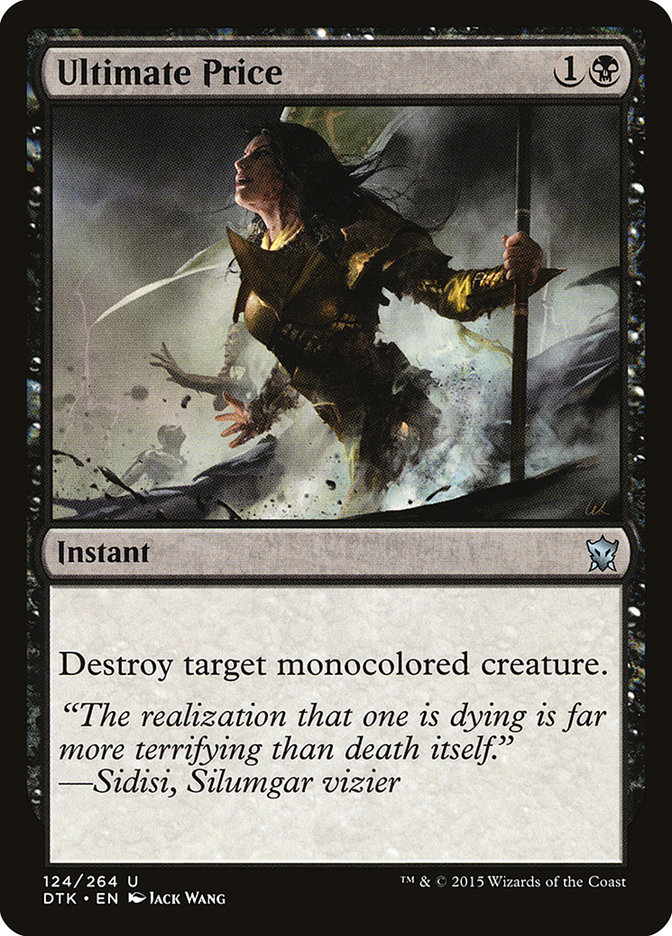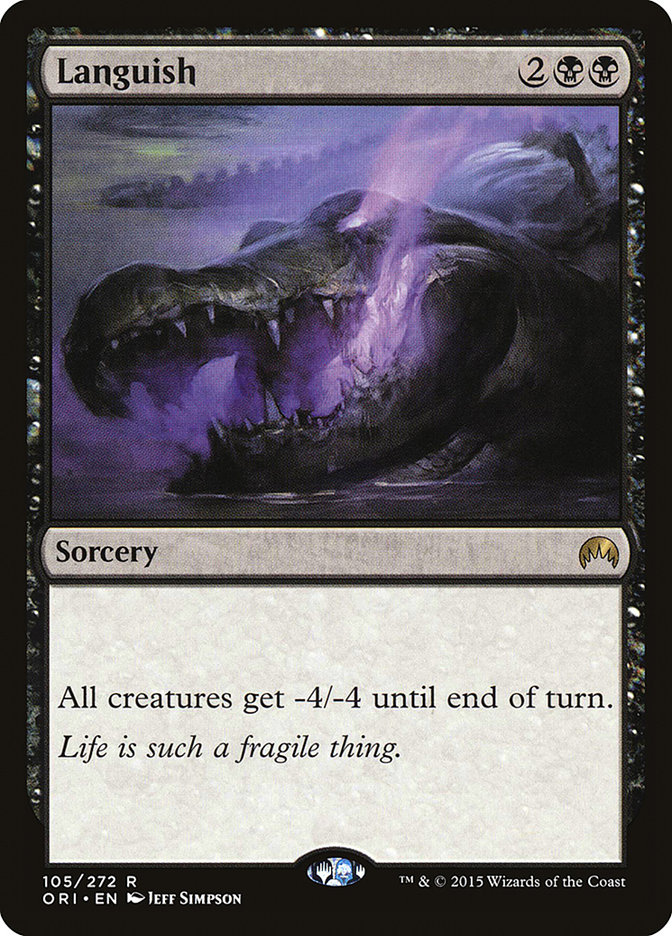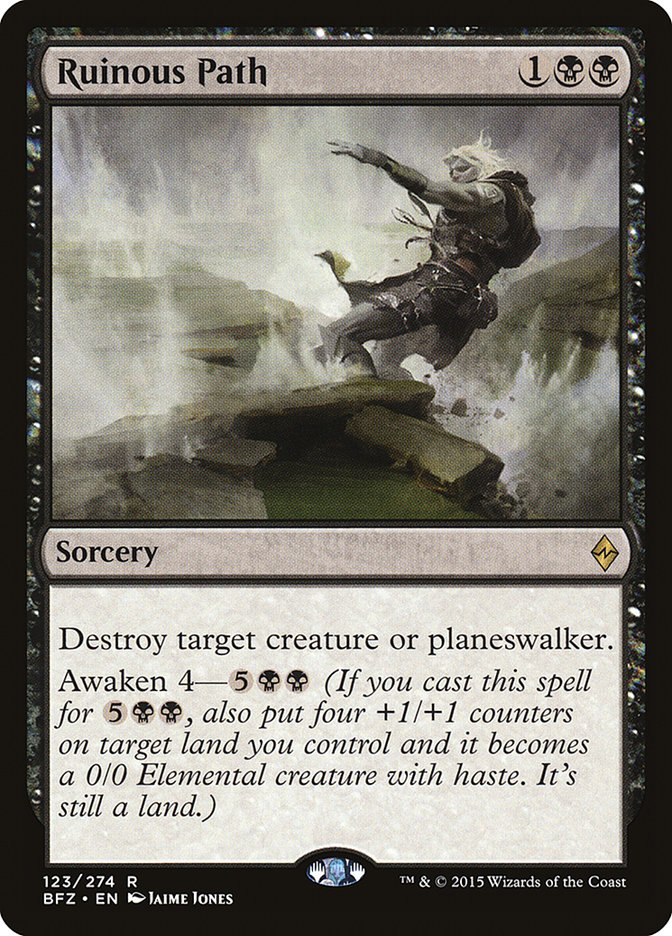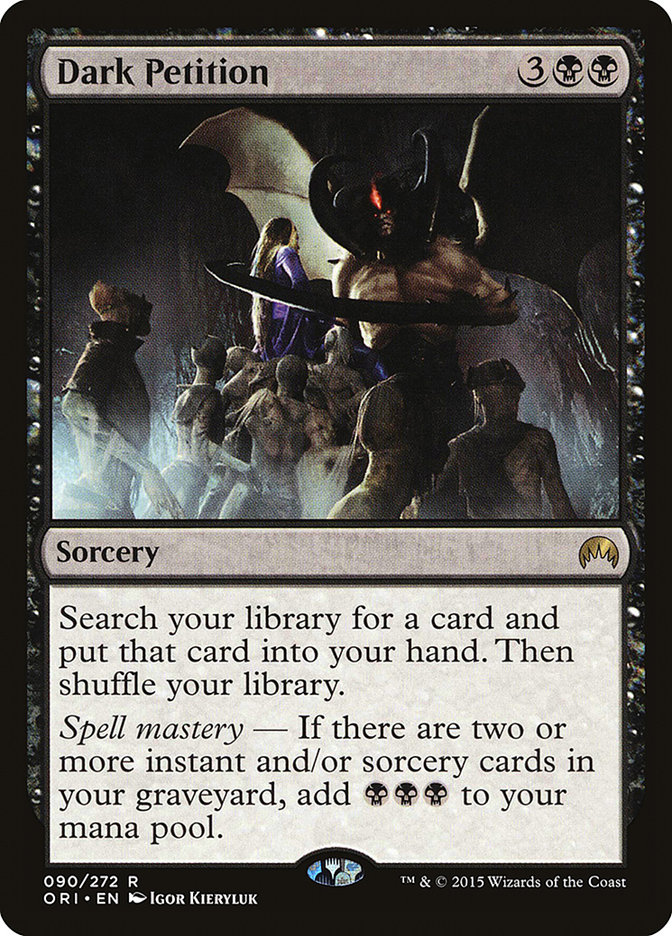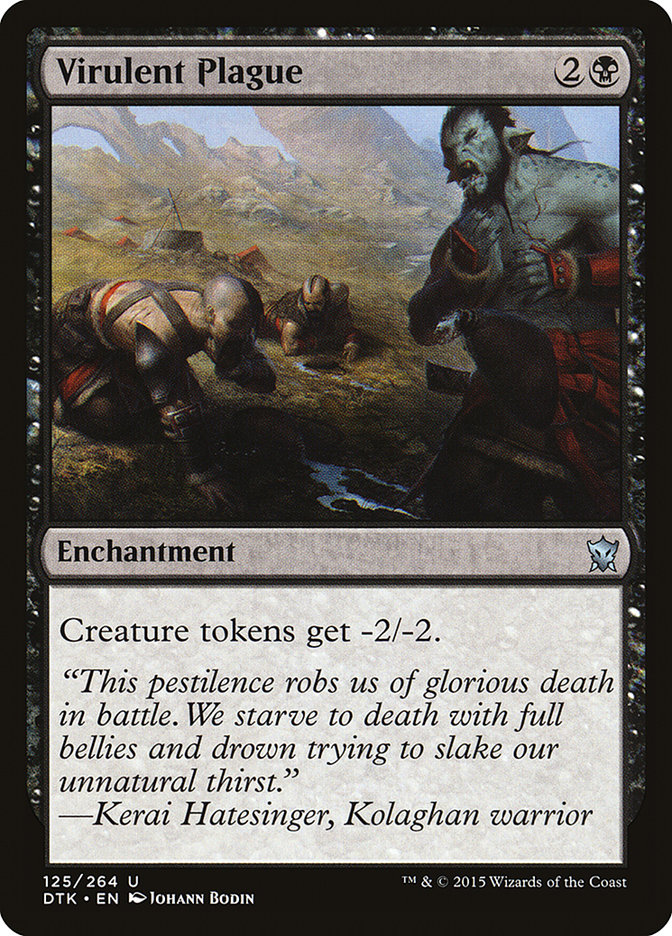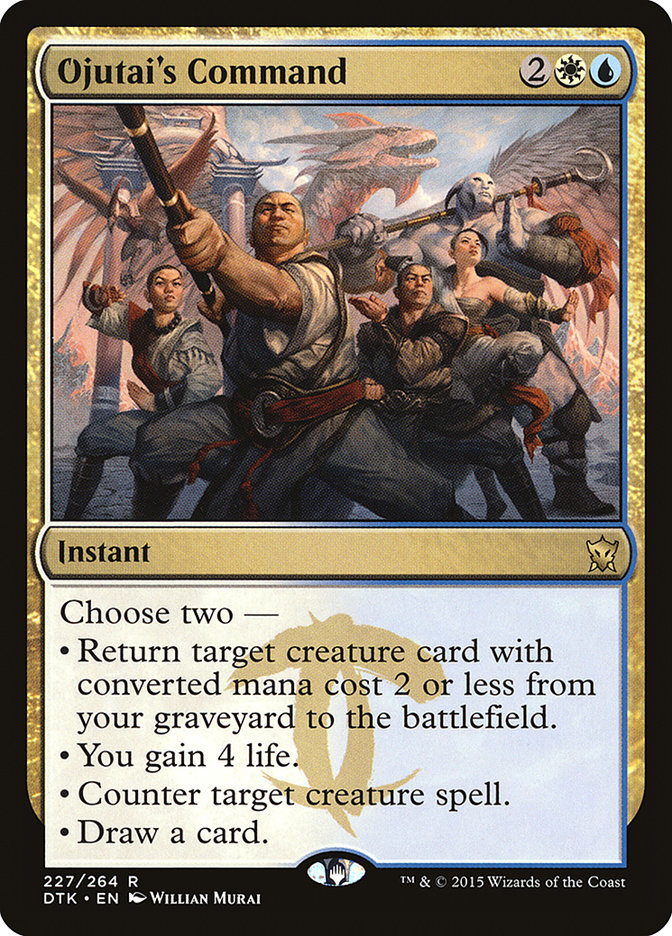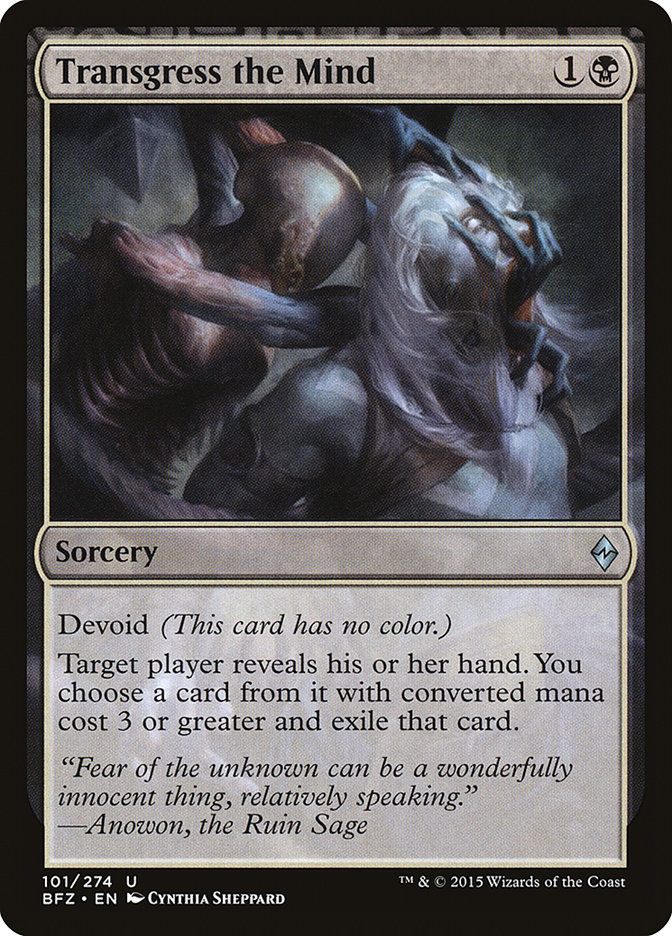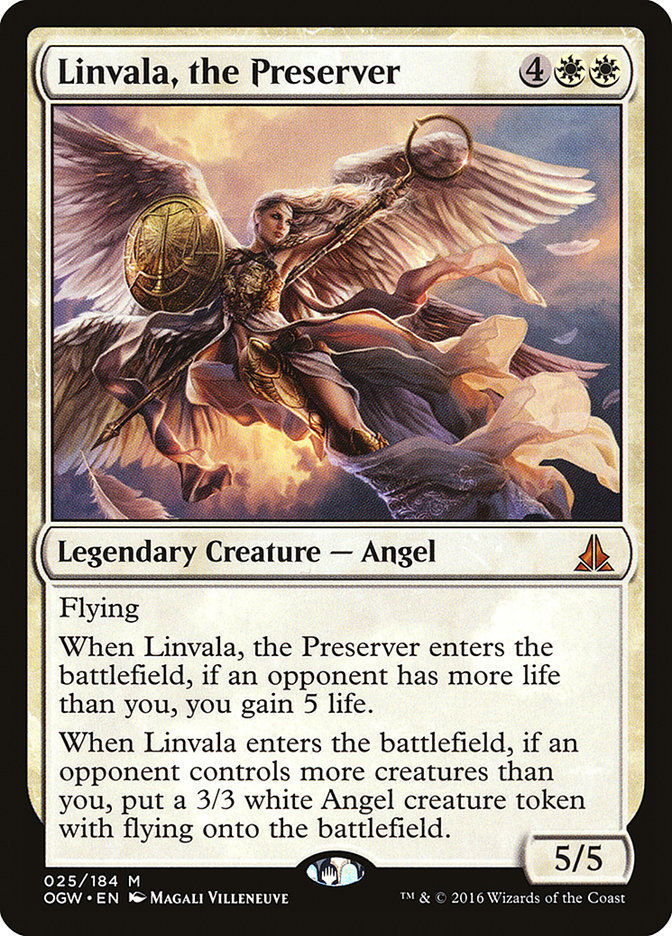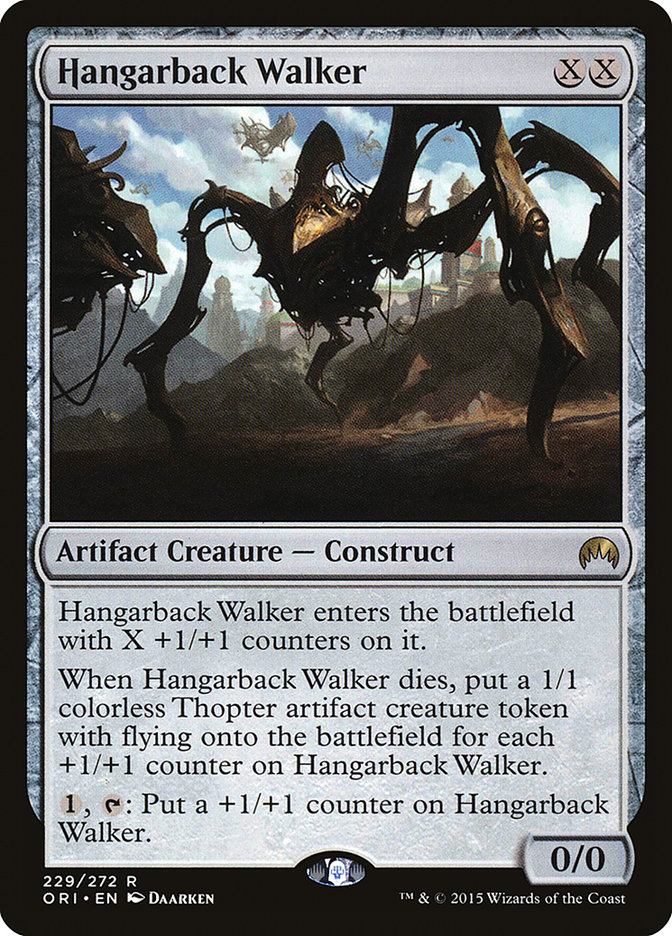The “new set” dust has settled, the playtesting is complete, and the beginning of a new era of Dragons has begun. I started off this new format with a lot of ideas, but the existence of World Breaker has pushed me into a black strategy with proper removal and sideboard hate to answer the haymaker.
Jeskai Dragons was a deck that excited me the most to play, and if it weren’t for the popular Ramp deck that will most certainly be out in full force this weekend, I’d give it a shot. I still have high hopes for Avacyn’s Judgment; Nahiri, the Harbinger; Radiant Flames; Chandra, Flamecaller; and the Thunderbreak Regent / Dragonlord Ojutai combo. At this point, it’s all about Esper Dragons and the vast reach it has against each deck in the new metagame that you’ll face this weekend in Baltimore for the first SCG Tour® tournament of the new season.
In my last article I went over the initial build of Esper Dragons. Since then I have axed a few cards, tweaked the manabase a tad, and developed a competitive sideboard that will raise an eyebrow or two with the unique card choices. In today’s article, I will explain the changes made from the last list, give a detailed description of the sideboard, and discuss some of my findings discovered during testing that will help you prepare for this weekend.
Creatures (10)
Planeswalkers (2)
Lands (27)
Spells (21)

The Maindeck
The manabase from the last article was spot-on to my surprise and easily exceeded expectations. The only change I made was adding a Swamp to make it 27 lands instead of 26. I envisioned a world where control mages were forced to be a turn behind again, similar to the Standard format where Temples were first introduced.
In this scary world, aggressive decks would eat us alive as they did before, but I landed that mana dart right on the bullseye somehow. The games began and the mana flowed untapped turn after turn, almost to the same beat as the format that just rotated. Nothing will ever be as good as fetchlands into Battle lands, but this is pretty darn good by Standard’s terms. There will always be some games (similar to Khans) where lands enter the battlefield tapped and don’t cooperate, but that’s fine. We take the risk of having our lands slow down our decks when we sign up for multiple colors and play cards that have double-cost requirements. This is one of those lucky experiments that has gone very right. This means that any shard you choose that has two sets of Battle lands has nearly perfect mana and can be crafted to fit any midrange or control mind. Esper happens to be one of those lucky shards, which gives us the green light to move forward this weekend confidently.
The maindeck also went through some slight modifications. The saddest moment I had with testing was discovering the weakness of Epiphany at the Drownyard. I had such high hopes for this card, but it turned out to be a real stinker in nearly every game and served as “just all right” on a rare occasion. I knew Steam Augury was no good, but that was mainly due to the mana. Epiphany at the Drownyard has the flexibility to be used early to hit key land drops or spells.
I was able to trick and confuse my opponents on many occasions when casting it, but even then the result was less than optimal. There were some cases where land drops were hit and life was good, but at the cost of losing vital spells with no chance to rebuy them. The dream of having spells hit the graveyard and using Jace, Vryn’s Prodigy to win on both fronts was just that…a dream. I wanted Epiphany at the Drownyard to be good more than anything, because who doesn’t want a powerful, instant draw spell? There wasn’t an occasion where Painful Truths was worse from turns 3 to 6.
After many, many turns, Epiphany at the Drownyard gives a burst of cards during the end step and that is powerful. The issue is that in Game 1, many of the cards are weak against an opponent when you are very far behind. If you have seven mana or more and not dead, you’ll probably win anyway, which makes it weak in that aspect as well. The tested conclusion became that Epiphany at the Drownyard was fantastic against the control mirror after Game 1, when all of the cards are fantastic, and medium to medium-low against everything else at most points in the game. This is a card that I am not setting ablaze, but it is one that will be shelved until delirium or other graveyard-relevant cards are printed.
The Painful Truths number has been cranked up to four and has been working great. The initial fear of playing so many Painful Truths is of course the loss of life we have to endure. Anguished Unmaking has been an all-star, so that gives us six ways to lose three life and the deck must offset that in somehow to keep the powerful cards working in the deck. Life loss wasn’t a problem at all in testing. The midrange, ramp, and control decks apply zero pressure against Esper Dragons. There is a renegade Sylvan Advocate, a threatening Collected Company, gigantic ramped creatures, some dragons here and there, and other mild green threats that have survived the rotation. Eldrazi, Aggro Humans, and a few G/R lists are the matchups that have provided problems for Esper Dragons in Game 1.
There isn’t a world where aggressive decks don’t have the upper hand on control Game 1, but luckily the sideboard strategy we deploy is easily enough to stop them in their tracks. The aggro of now is nothing like Atarka Red of before. There are some token elements and a few burn spells that survived the rotation purge that can now pair with some under-costed Humans, Vampires, and/or planeswalkers that can pose a problem, but their speed has been reduced from a ten to a six. The explosive nature of aggressive decks with fetchlands, perfect fast mana, and one-mana knuckleheads has gone the way of the dinosaur. That is great news for us and allows control mages everywhere to pack as many Painful Truths as they’d like in their Grixis or Esper list.
The one warning I give anyone venturing out is to pack enough ways to gain life in the maindeck and sideboard to offset the risk and to avoid Kalitas, Traitor of Ghet as their go-to solution. Kalitas, Traitor of Ghet isn’t as powerful as it once was and the “lifegain” on that creature is in big quotation marks. There isn’t a Rally the Ancestors deck to hose with a creature that wins when left on the battlefield, the lifegain only works when he is successfully in combat, and he dies to Grasp of Darkness and Declaration in Stone, which are the two staple removal spells in aggressive and midrange decks.
I don’t think that he’s unplayable or bad in every scenario, but just relying on him like so many mages have done in the past isn’t going to be enough. Bring the Foul-Tongue Invocations, Ojutai’s Commands, Shambling Vents, and any other spell you can dig out that has lifegain upon cast to ensure you don’t lose to a combination of mediocre creatures and your own spells.
Removing Ultimate Price was another big maindeck change that occurred after testing. There is just too much Eldrazi for me to risk having dead removal spells rotting in my hand. The biggest fear I had when building the original version of this deck was the mana not working, so that influenced me to drop Grasp of Darkness for Ultimate Price. The mana firing on all cylinders allowed me to return Grasp of Darkness to the maindeck and give Ultimate Price the axe.
The biggest flaw with Ultimate Price, besides it being completely dead against one of the biggest archetypes, is its lack of utility when facing down creature-lands. It is unacceptable that a removal spell can’t kill creature-lands in the midrange matchups or an entire deck’s worth of potential targets from the colorless camp. I love Grasp of Darkness and I was very happy to get it back on the team; however, I could only fit one in the maindeck.
Game 1, the ultimate goal is to cast Languish on turn 4 and sweep up the competition. The early mana is used to set up Jace, Vryn’s Prodigy; draw cards; attack a player’s hand; and counter a spell here and there with some targeted removal as backup. Grasp of Darkness works, the mana cooperates, but it is unnecessary to pack a full set of them and force yourself to summon two black sources on turn 2 every time.
Languish gives us the opportunity to develop our mana and cleanse the board for the price of a few life points here and there. I increased the Languish count from one to three and added the fourth one in the sideboard. This change has been great and Languish has been a wrecking ball against the majority of decks out there. The countermagic, hand disruption, and three-mana removal is easily enough firepower to stave off the early-game issues and set us up for a Languish into the future. The maindeck, as written, has been working well and I hope you all have the same experiences.
The Sideboard
Each card in the sideboard has been vetted appropriately and I am very confident in its ability to fill the weak gaps in any matchup you’ll face at #SCGBALT this weekend. Many of the sideboard cards are one-ofs that complement the removal that exists in the deck.
The one Ruinous Path gives a third answer to planeswalkers that find their way onto the battlefield. I am not sold on To the Slaughter and found that delirium can be hard to assemble by turn 4 where you desperately need to kill a planeswalker that snuck onto the battlefield. There are some games where I was able to force an opponent to sacrifice a planeswalker with the creature entering the battlefield on the stack, but that situation is hard to recreate unless you have kept a very clean battlefield. Ruinous Path is a sorcery but helps lighten the workload of Anguished Unmaking after sideboard. This addition combined with Dark Petition gives each spell an additional copy in the deck and works wonders.
Tutoring up the one Virulent Plague or two Infinite Obliterations has been fantastic against their respective matchups. Virulent Plague is a card that I never want to play two of and Dark Petition allows that to be a reality. The other cards that provide additional consistency after sideboard are the third Transgress the Mind, second Grasp of Darkness, third Ojutai’s Command, fifth hard counterspell (brought in on the play against nearly every matchup) Scatter to the Winds, and the fourth Languish.
These cards have obvious strengths against specific threats and strategies our opponents may deploy this weekend. There are decks with many creatures that have four toughness or less, which calls for Grasp of Darkness and Languish to come seal the deal. Some of the creature decks out there are slower or have burn backup, and then it’s time for a Scatter to the Winds with Ojutai’s Command backup. The Transgress the Mind is at user discretion for any matchup that contains powerful spells starting at turn 3 and comes in very often. Infinite Obliteration and Negate are also easy to plug in against very specific decks. Negate handles the planeswalker and control workload, while Infinite Obliteration torments Ramp and Dragon players. The spicy one-of is Linvala, the Preserver.
She has been one of my favorite cards to test in Esper Dragons and does an excellent job to offset the life loss against the more aggressive decks after board. I don’t bring her in against the control mirror, but I do employ her services against decks that need a lot of creatures to take us down. The lifegain is the biggest perk, but if you’re able to get a second blocker or win condition, then you really hit pay dirt.
The wackiest card in the sideboard is definitely Hangarback Walker. There are quite a few sacrifice effects in the format and that poses a problem for mages trying to deal lethal damage with expensive Dragons. These sacrifice effects are in abundance in Eldrazi Black, B/W Control, and any midrange deck out there that use black spells. Usually I ignore these issues and play a longer control game with them, but losing Dig Through Time has made that strategy less than foolproof.
After toying with Hangarback Walker for these situations, I realized that it actually works wonders and that’s not all! This little creature in the sideboard is the card to replace Arashin Cleric against the aggressive decks of the format. It blocks early on, sometimes kills the creature in combat, brings Thopters to block again, and when drawn later is a gigantic threat that has to be answered. It has performed so well I have considered upping the number to three, but I couldn’t make a cut in the final hours of preparing this article.
It is unconventional to play a card like this in a control sideboard, but those of you who know me are quite aware that I never shy away from peculiar answers to everyday tournament problems. Use it in every matchup where you don’t need Virulent Plague and you’ll see what I mean.
I have this deck sleeved up and ready to go for this weekend, my friends. I hope to see all of you there, ready to win one for Team Control.


